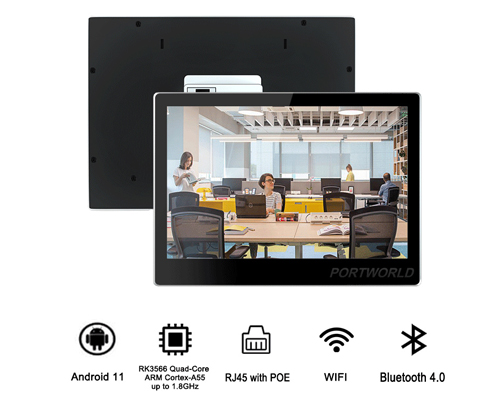Thermoforming Mould
Sustainability in Thermoforming: Eco-Friendly Mould Design and Material Choices
In recent years, the global manufacturing industry has undergone a significant transformation toward sustainability, driven by environmental concerns, consumer expectations, and stricter regulations. Among the many manufacturing methods adapting to this green movement, thermoforming stands out for its versatility and potential to embrace eco-friendly innovations. Central to this transformation is the evolution of the Thermoforming Mould, which plays a critical role in determining the efficiency, waste generation, and material usage in the process.
This article explores how sustainable practices are shaping the world of thermoforming, focusing on eco-friendly mould design and material selection. From reducing energy consumption to implementing recyclable materials, the path to a greener thermoforming industry is paved with innovation, precision engineering, and responsible choices.
Understanding Thermoforming and Its Environmental Impact
Thermoforming is a manufacturing process in which a plastic sheet is heated until it becomes pliable and then formed over a mould to create a desired shape. It is widely used in packaging, automotive, consumer goods, and medical industries. While thermoforming offers flexibility, speed, and cost-effectiveness, traditional methods have also contributed to plastic waste, high energy consumption, and excessive resource use.
The Thermoforming Mould serves as the foundation for this process. The design, material composition, and maintenance of the mould influence not only product quality but also sustainability. A poorly designed mould can lead to inefficiencies such as uneven heating, material wastage, and frequent replacements — all of which have environmental and economic costs.
Eco-Friendly Innovations in Thermoforming Mould Design
1. Lightweight and Durable Mould Materials
Traditionally, Thermoforming Moulds have been made from metals such as aluminum or steel due to their durability and heat resistance. However, these materials are energy-intensive to produce and heavy to handle. Modern sustainability initiatives are introducing alternative materials like composite resins, reinforced polymers, and hybrid structures that offer comparable strength at a fraction of the environmental footprint.
Lightweight moulds reduce energy consumption during production and operation. For example, composite moulds heat and cool more quickly, cutting cycle times and saving energy. Additionally, they are easier to transport and require less maintenance, contributing to a longer service life and lower overall resource use.
2. Modular Mould Design for Reusability
A major advancement in sustainable thermoforming is modular mould design. Instead of creating an entirely new mould for each product variation, modular systems use interchangeable inserts or adjustable cavities. This flexibility reduces material waste and the need for multiple moulds, leading to substantial cost and energy savings.
Manufacturers can adapt a single Thermoforming Mould to produce different product types or sizes simply by replacing specific components. This reusability aligns perfectly with circular economy principles — designing systems that minimize waste and maximize resource efficiency.
3. Precision Engineering and Digital Twin Technology
Modern digital tools such as CAD (Computer-Aided Design) and digital twins allow engineers to simulate thermoforming processes before physical production begins. By testing airflow, temperature distribution, and material behavior virtually, manufacturers can optimize mould geometry to minimize defects and scrap rates.
A well-optimized Thermoforming Mould ensures even material distribution, reducing the amount of plastic required for each part. Moreover, predictive maintenance technologies help extend mould life by identifying wear and tear before failures occur, thereby preventing wasteful replacements.
4. Surface Treatments for Energy Efficiency
The surface of a Thermoforming Mould plays a vital role in heat transfer and product release. Applying advanced surface coatings — such as low-friction, non-stick, or reflective finishes — improves thermal performance and reduces the need for excessive heating or cooling. Some coatings also allow for easier demoulding, reducing damage to formed parts and minimizing material loss.
By enhancing thermal efficiency, these coatings cut down on energy use and speed up production cycles, making them a simple yet powerful way to achieve sustainability goals.
Sustainable Material Choices in Thermoforming
Beyond mould design, the choice of materials used in thermoforming has a profound impact on sustainability. Selecting eco-friendly materials not only reduces environmental harm but also aligns with growing consumer demand for green products.
1. Recycled and Recyclable Plastics
One of the most effective ways to make thermoforming more sustainable is by integrating recycled materials into production. Many thermoformers now use post-consumer or post-industrial recycled plastics such as PET, PP, and PS. These materials can be repeatedly processed with minimal degradation in quality when handled properly.
Equally important is designing products made with a single type of recyclable plastic to facilitate end-of-life recycling. The Thermoforming Mould must therefore be designed with recyclability in mind, ensuring that formed parts can easily return to the production cycle.
2. Bioplastics and Renewable Alternatives
The rise of bioplastics offers another promising path for sustainable thermoforming. Derived from renewable resources such as cornstarch, sugarcane, or cellulose, bioplastics like PLA (Polylactic Acid) and PHA (Polyhydroxyalkanoates) can replace traditional petroleum-based plastics.
When paired with a properly engineered Thermoforming Mould, these materials can deliver similar strength and flexibility while being compostable or biodegradable under certain conditions. However, bioplastics often require careful temperature and pressure control, making advanced mould design crucial for achieving consistent results.
3. Thin-Gauge and Lightweight Material Optimization
Reducing material thickness without compromising product integrity is another key strategy for sustainability. Advances in Thermoforming Mould precision allow manufacturers to form thinner sheets with even wall distribution, effectively lowering material consumption per unit.
Lightweight packaging and components not only use fewer raw materials but also reduce shipping weights, cutting carbon emissions across the supply chain. Through better control of forming pressures and mould temperature, manufacturers can achieve high-quality results with less material.
Efficiency in Thermoforming Production
Energy consumption is one of the largest environmental impacts in thermoforming. The process requires significant heat to soften plastic sheets and then cool them rapidly. Sustainable Thermoforming Moulds can make a considerable difference here.
Modern moulds incorporate energy-efficient heating and cooling systems, such as embedded channels for precise temperature control, infrared heating, or vacuum-assisted cooling. These systems reduce cycle times and minimize the energy required for each production run.
In addition, integrating renewable energy sources like solar or wind into manufacturing operations further reduces carbon footprints. When combined with smart mould technology and real-time monitoring, manufacturers can optimize energy use and track sustainability performance continuously.
Waste Reduction and Circular Economy in Thermoforming
Waste reduction is a central pillar of sustainability. In thermoforming, waste often arises from excess material trim, defective parts, or mould setup errors. Sustainable Thermoforming Mould design directly combats these inefficiencies.
Optimizing mould layout for maximum sheet utilization minimizes scrap rates, while closed-loop recycling systems capture and reprocess trim waste directly back into production. Additionally, software-driven quality control systems can detect and correct forming inconsistencies early in the process, preventing unnecessary material loss.
Adopting a circular economy approach ensures that every stage — from material sourcing to product disposal — contributes to a sustainable cycle of use, recovery, and reuse.
The Role of Additive Manufacturing in Sustainable Mould Production
Additive manufacturing, or 3D printing, is revolutionizing the way Thermoforming Moulds are produced. By enabling intricate geometries and lightweight designs, 3D printing reduces material waste and accelerates prototyping. It also allows for localized manufacturing, cutting transportation emissions.
Engineers can print mould inserts using recycled metal powders or biodegradable polymers, further improving sustainability. This approach also allows for faster design iterations, helping manufacturers refine mould efficiency and reduce product development time.
Long-Term Benefits of Sustainable Thermoforming
Embracing sustainability in thermoforming is not just about environmental responsibility — it’s also a smart business strategy. Companies that invest in eco-friendly Thermoforming Moulds and materials gain several long-term advantages:
-
Reduced operating costs through energy efficiency and material savings
-
Improved brand reputation and market competitiveness
-
Compliance with environmental regulations and certifications
-
Enhanced product quality and performance
-
Increased lifespan of production tools, minimizing replacement expenses
As consumer awareness of sustainability grows, manufacturers who prioritize green practices position themselves as industry leaders capable of meeting modern expectations.
Challenges and the Road Ahead
Despite the many benefits, achieving sustainability in thermoforming still presents challenges. The initial cost of advanced mould technologies and eco-friendly materials can be higher than conventional options. Additionally, processing bioplastics or recycled materials requires specialized equipment and technical expertise.
However, ongoing research and innovation continue to make sustainable solutions more accessible. As technology advances, Thermoforming Moulds will become smarter, lighter, and more adaptable, helping manufacturers strike the perfect balance between performance and environmental responsibility.
Conclusion: Shaping a Greener Future with Sustainable Thermoforming Moulds
Sustainability in thermoforming is no longer an optional consideration — it’s a necessity for the future of manufacturing. By rethinking Thermoforming Mould design and embracing eco-friendly materials, the industry can dramatically reduce its ecological footprint while maintaining efficiency and profitability.
From modular mould systems and digital twin simulations to recycled materials and energy-efficient processes, the shift toward greener thermoforming is well underway. As companies continue to innovate, the Thermoforming Mould will remain at the heart of this sustainable evolution — shaping not just products, but a cleaner, more responsible future for manufacturing worldwide.




